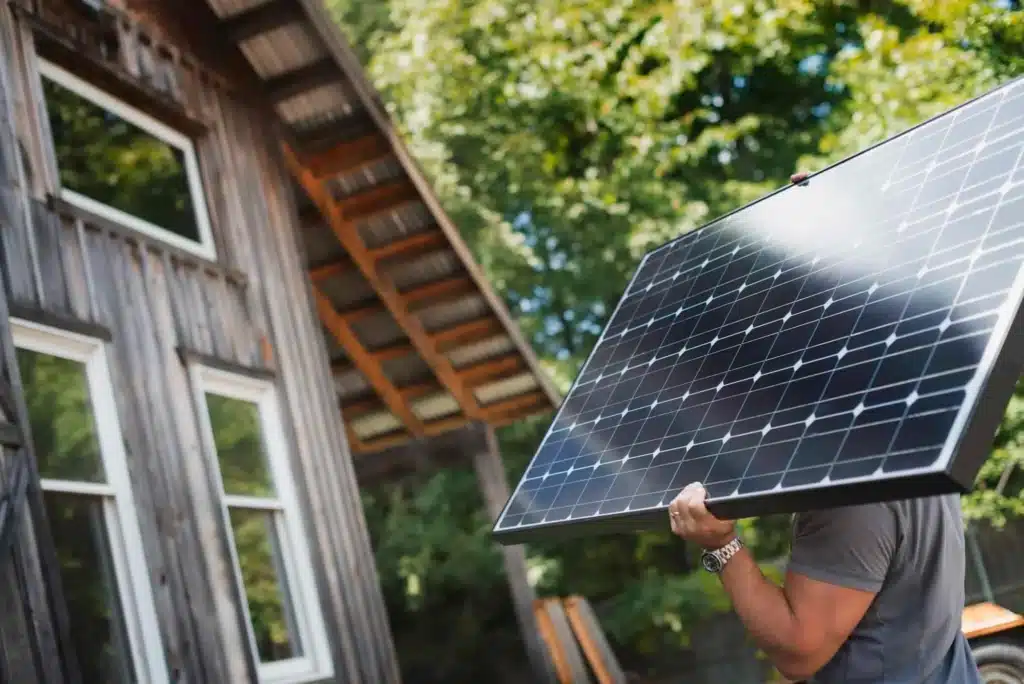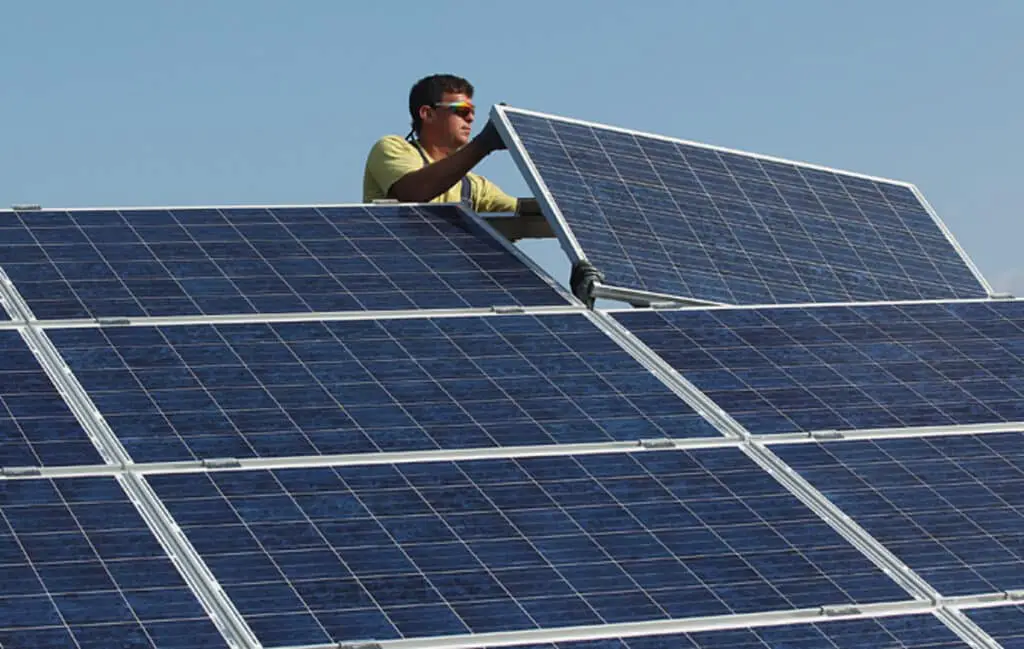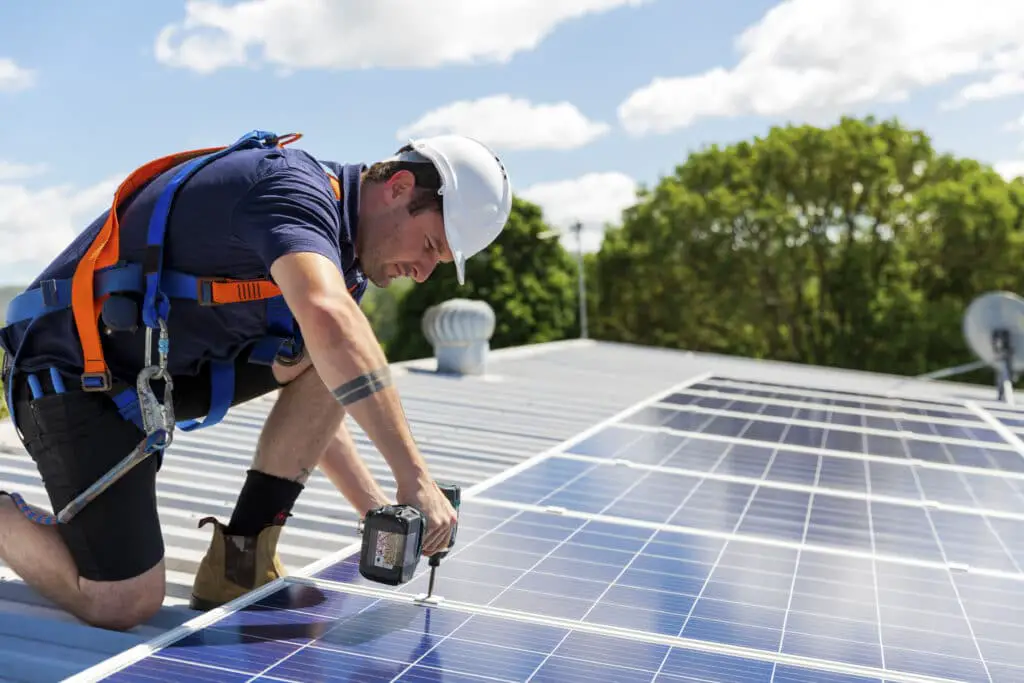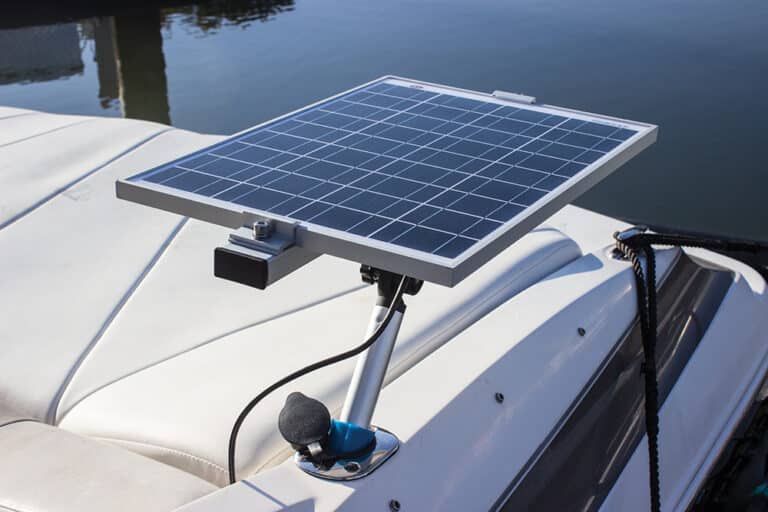Introduction
How To Connect Solar Panel To Ring Camera: As environmentally conscious practices become increasingly important, many homeowners are turning to solar power as a sustainable energy solution. Solar panels offer a cost-effective and eco-friendly way to power various devices, including security cameras. One popular camera brand that supports solar panel integration is Ring.
Ring cameras are known for their advanced features, ease of use, and ability to enhance home security. By connecting a solar panel to your Ring camera, you can enjoy uninterrupted surveillance without the need for frequent battery changes or worrying about power outages.
In this guide, we will walk you through the step-by-step process of connecting a solar panel to your Ring camera. We will cover the necessary tools and materials, installation procedures, and troubleshooting tips to ensure a smooth and successful setup.
Before getting started, it’s essential to choose the right solar panel compatible with your Ring camera model. Ring offers specific solar panels designed to seamlessly integrate with their cameras, ensuring optimal performance and compatibility.

Does Ring Solar Panel work without direct sunlight?
No, the Ring solar panel requires at least 3 to 4 hours of direct sunlight to produce enough energy. But if there’s enough power stored, it can still charge devices even at night.
The Ring Solar Panel is designed to work best with direct sunlight, as it uses solar energy to charge the battery of compatible Ring devices. Direct sunlight provides the most significant amount of solar energy, allowing the solar panel to generate more power and recharge the device’s battery efficiently.
However, the Ring Solar Panel can still work to some extent even in conditions with indirect or partial sunlight. It may not produce as much energy as it would under direct sunlight, but it can still contribute to maintaining and extending the battery life of your Ring device.
The Ring Solar Panel works best and most efficiently when it is in full sunlight. It can charge your Ring device consistently and reliably so that it stays charged all the time. Even though it might still work in places with hazy or little sunlight, it will charge less quickly. If your location is often cloudy or in the shade, you might want to think about adding more power options or a backup battery to make sure your Ring device can keep working.
Can you use solar panel with wired ring camera?
The Solar Panel/Super Solar Panel with barrel plug connector is specifically configured to work with Ring Stick Up Cam and the Ring Spotlight Cam. Ring provide solar panels with fork connector cable or micro USB cable to help charge your Ring Video Doorbell.
Ring Solar Panel is designed to charge and extend battery life for their battery-operated devices. Wired Ring cameras don’t need batteries because they’re powered by a direct electrical connection.
Wired Ring cameras draw power from a traditional electrical outlet or through Power over Ethernet (PoE) for certain models. This means they do not rely on batteries and, therefore, do not require a solar panel for charging.
But there are other solar-powered choices for security cameras that are wired. Some third-party makers make solar panels with built-in batteries that are designed to power PoE cameras. These solar panels have a battery built in so they can store extra energy made when it’s sunny and use it to power the camera at night or when there isn’t enough sunlight.
If you have a wired Ring camera and are interested in solar power, it’s essential to ensure compatibility and proper power requirements. Look for solar panel systems specifically designed for PoE cameras and check that they provide the necessary voltage and current to support your camera model.
Does my Ring Solar Panel have to be in direct sunlight?
Ring solar power devices require three to four hours of direct sunlight a day. If your installation area is frequently very cloudy or gets a lot of rain or snow, this could limit the amount of sunlight that your solar power device receives. Note: The solar charger or solar panel requires direct sunlight.
Optimal Performance with Direct Sunlight
Putting the Ring Solar Panel somewhere that gets full sunlight for most of the day is the best way to make sure it charges quickly and properly. The most solar energy comes from direct sunlight. This means that the solar panel can make more power and charge your Ring device’s battery faster.
Partial Sunlight and Indirect Sunlight
The Ring Solar Panel can still function in conditions with partial sunlight or indirect sunlight, such as on partly cloudy days or in areas with light shading. Solar panels can help extend the battery life of your Ring gadget, but their energy production is lower than direct sunshine.
Adjusting the Angle
If possible, adjust the angle of the solar panel to maximize its exposure to the sun. Mounting the panel to face the sun directly can improve its performance, especially in regions with varying sun angles throughout the day.
Seasonal Changes
Keep in mind that the amount of sunlight and the solar panel’s performance may vary with the seasons. In some regions, the position of the sun in the sky changes throughout the year, affecting the amount of sunlight the solar panel receives.
Cloudy Days and Low Light Conditions
Overcast days or significant cloud cover diminish solar panel energy output. Low light may impede solar panel charging.
Battery Conservation
Ring devices are designed to be energy-efficient and can manage their power consumption. When the solar panel is unable to provide sufficient charging, the device will optimize its battery usage to extend operation.
How many Ring cameras can you connect to a solar panel?
one camera
You can only connect one solar panel to one camera.
Ring battery-operated cameras and wish to power them with solar panels, you will need to purchase a separate solar panel for each camera. Each camera requires its own dedicated solar panel connection to ensure optimal performance and charging efficiency.
It’s essential to use the Ring solar panel model that is compatible with your specific camera model. Ring offers different solar panels designed to fit the various camera designs and sizes. When purchasing a solar panel, make sure to select the one that matches your camera model to ensure a proper fit and function.
The Ring Stick Up Cam Wired and Ring Spotlight Cam Wired do not have a solar panel developed for them. Traditional electrical outlets or PoE (Power over Ethernet) connections power wired cameras, avoiding battery charge.
Keep in mind that technology and product offerings may have evolved since my last update, so it’s always a good idea to visit Ring’s official website or check with their customer support for the latest information on compatible accessories, including solar panels, for your specific Ring camera models.
Can you hook up ring doorbell to solar panel?
Physically installing and connecting your Ring Video Doorbell Solar Panel to your Video Doorbell is a simple process. Scroll down for a step-by-step guide. Note: You should complete the setup of your Ring Video Doorbell in your Ring app before installing the Ring Video Doorbell Solar Panel.
Choose the Right Solar Panel
Choose the right Ring Solar Panel for your Ring Doorbell model. Each solar panel fits the Ring Doorbell for optimal connectivity and charging.
Turn Off Your Doorbell
Before connecting the solar panel, it’s essential to turn off your Ring Doorbell to avoid any potential electrical issues during installation.
Mount the Solar Panel
Find a suitable location for the solar panel that receives ample sunlight throughout the day. The panel should face the sun for optimal charging. Securely mount the solar panel to the desired surface using the provided hardware.
Connect the Solar Panel to the Doorbell
Use the included cable to connect the solar panel to the charging port on your Ring Doorbell. The charging port is typically located at the back of the device. Ensure a snug and secure connection to prevent any accidental disconnection.
Turn On Your Doorbell
Once the solar panel is connected, turn your Ring Doorbell back on. The solar panel will now continuously charge the Doorbell’s battery using solar energy.
Monitor and Maintain
Regularly check the solar panel to ensure it is clean and free from any debris that might obstruct sunlight. Clean the panel with a soft, damp cloth if needed to maintain optimal charging efficiency.
How do you charge a ring doorbell with a solar panel?
Using the provided screws and anchors, mount your solar charger to the exterior wall. Connect the micro-USB cable to the charging port on the back of your Ring Video Doorbell. Attach your Ring Video Doorbell to your Solar Charger. Tighten the security screws on the bottom of your Ring Video Doorbell.
Charging a Ring Doorbell with a solar panel is a straightforward process that involves connecting the solar panel to the Doorbell’s charging port. Here’s a step-by-step guide on how to charge your Ring Doorbell using a solar panel:
Select the Compatible Solar Panel
Before you begin, ensure you have the correct solar panel model that is designed to be compatible with your specific Ring Doorbell model. Each Ring Doorbell has a specific solar panel tailored to fit its charging port.
Turn Off the Doorbell
To avoid any potential electrical issues during installation, turn off your Ring Doorbell. You can do this through the Ring app by navigating to the device settings and selecting the option to power off.
Position and Mount the Solar Panel
Find an ideal location for the solar panel where it can receive direct sunlight for most of the day. Ensure there are no obstructions that could shade the panel. Use the provided hardware to mount the solar panel securely to the chosen surface, such as a wall or roof.
Connect the Solar Panel to the Doorbell
Using the included cable, connect the solar panel to the charging port on the back of your Ring Doorbell. The charging port is typically located beneath a cover on the back of the device. Insert the connector firmly into the charging port until it is snug and securely connected.
Turn On the Doorbell
Restart your Ring Doorbell after connecting the solar panel. Turn on and link the gadget to your Wi-Fi network using the Ring app.
Monitor and Maintain
Regularly monitor the solar panel to ensure it is clean and free from any debris that could obstruct sunlight. A dirty solar panel may reduce charging efficiency. Clean the panel with a soft, damp cloth if needed.
Check Battery Status
With the solar panel connected, the Ring Doorbell’s battery should stay charged or progressively increase, depending on sunlight. The solar panel will charge the Doorbell’s battery during the day, assuring continuous operation and reducing manual recharge.
By following these steps, you can easily charge your Ring Doorbell with a solar panel, providing an eco-friendly and convenient power source for your security device. As always, refer to the manufacturer’s instructions and safety guidelines for proper installation and usage of the solar panel with your Ring Doorbell.

Do the solar panels work with Ring camera?
The Solar Panel/Super Solar Panel with barrel plug connector is specifically configured to work with Ring Stick Up Cam and the Ring Spotlight Cam. Ring provide solar panels with fork connector cable or micro USB cable to help charge your Ring Video Doorbell. Can I use the Solar Panel/Super Solar Panel inside?
The Ring Solar Panel is compatible with certain Ring camera models, such as the Ring Stick Up Cam and Ring Spotlight Cam. These cameras are powered by rechargeable batteries, and the solar panel connects to the camera’s battery to keep it charged using solar energy.
Here’s how the Ring Solar Panel works with Ring cameras:
Solar Panel Installation
The Ring Solar Panel is typically mounted outdoors in an area that receives direct sunlight for a significant portion of the day. It should be angled toward the sun to maximize solar energy capture.
Connecting to the Camera
The solar panel comes with a cable that connects to the camera’s charging port. This port is usually located at the back or bottom of the camera.
Continuous Charging
Once the solar panel is connected to the camera, it continuously provides a charge to the camera’s battery. As long as the solar panel receives sufficient sunlight, it will keep the camera’s battery topped up.
Battery Management
The camera’s firmware is designed to manage power consumption efficiently. When the solar panel is providing sufficient charging, the camera will rely on the solar power source and use the battery only when needed, such as during low-light conditions or when there’s not enough solar energy available.
Monitoring and Maintenance
It’s essential to regularly monitor the solar panel to ensure it remains clean and free from any debris that might obstruct sunlight. A dirty solar panel can affect its charging efficiency. Clean the panel with a soft, damp cloth if needed.
By using a Ring Solar Panel with your compatible Ring camera, you can enjoy the benefits of an eco-friendly power source and reduce the need to manually recharge or replace batteries. The solar panel helps to ensure your Ring camera stays powered and ready to capture important events and activities around your home.
Does Ring Solar Panel work in winter?
Yes. Every season brings different challenges, but Ring Solar Smart Lights can still be just as valuable in winter months as long as you keep in mind certain considerations. Average hours of sunlight each day can vary greatly depending on where you live and what season you are in.
Ring Solar Panels can work in winter, but their charging efficiency may be reduced due to various factors associated with the season. While solar panels perform best in direct sunlight and warmer temperatures, they can still generate some power even during winter months.
Here are some key points to consider about the performance of Ring Solar Panels in winter:
Reduced Sunlight Hours
During winter, the days are shorter, which means there are fewer daylight hours for the solar panel to harness sunlight. Additionally, the sun’s angle is lower in the sky, leading to reduced solar energy exposure.
Overcast Days
Winter is often associated with cloudy and overcast weather, which can further limit the amount of sunlight reaching the solar panel. Cloud cover can significantly affect the panel’s charging efficiency.
Snow and Ice
In regions with snowfall, snow and ice can accumulate on the solar panel, covering the surface and blocking sunlight. This can temporarily halt or drastically reduce charging capabilities until the snow and ice are cleared.
Temperature Impact
Solar panels generally perform more efficiently in cooler temperatures. However, extremely cold temperatures may impact the camera’s battery performance and reduce overall charging efficiency.
Panel Tilt and Positioning
Properly positioning the solar panel and adjusting its tilt to face the sun can help maximize its exposure to available sunlight during winter.
Battery Management
Ring cameras with solar panels are designed to manage power consumption efficiently. During periods with reduced solar charging, the camera may utilize its battery reserve more conservatively.

Conclusion
Connecting a solar panel to your Ring camera is a practical and eco-friendly solution to keep your security device powered and operational without the hassle of frequent battery changes. The process is relatively straightforward, and with the right solar panel model, you can ensure seamless integration and optimal charging performance.
By following the steps outlined in the installation process, you can easily set up your solar panel and enjoy the benefits of solar-powered surveillance for your Ring camera. Remember to choose the correct solar panel model that matches your specific Ring camera model to ensure compatibility and proper charging.
After installing and connecting your solar panel, it will continuously charge your Ring camera’s battery. This reduces manual recharging and assures continued functioning in low-light or bad weather. To maximize performance, solar-powered devices must consider elements like solar panel orientation, sunlight exposure, and maintenance. Check the solar panel often to remove debris that could block sunlight and reduce charging efficiency.

